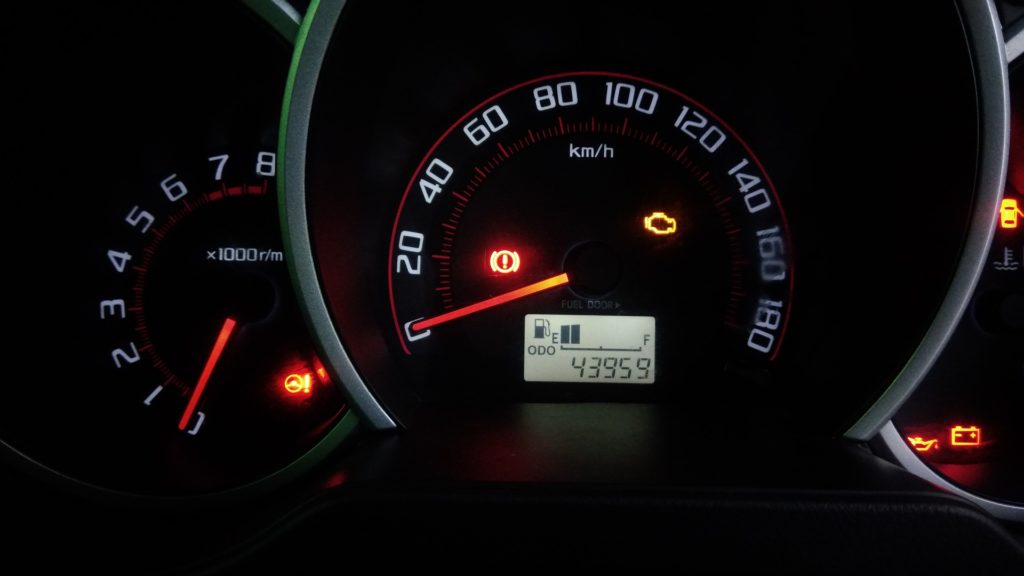The engine starter is one of the essential auxiliary components of an internal combustion engine.
In the old day’s car engines were hand started, as we now do with small two-stroke engines, this technique was used until 1912 when Charles F. Kettering came up with the electric starter, which was first used in the 1912 Cadillac automobiles. The electric starter consists of an electric motor with a small pinion at the end of its rotors shaft. This pinion is geared to the engine’s flywheel ring. They also include a solenoid that regulates the power to the starter motor and provides motion to the coupling mechanism.
As we turn the key or push the start button, the solenoid receives current directly from the battery of the car and directs it to the starter’s DC motor and to a coupling mechanism that connects the pinion to the flywheel. As the pinion transmits torque to the flywheel, the other systems of the engine start operating until the balance is achieved, and the engine can continue working by itself. This process is also known as “cranking” the engine. For very large engines, like those used in large tractors and industrial equipment, the torque supplied by an electric starter is not enough, and a smaller internal combustion engine, which has an electrical starter, is used for startup. Since the starter is a battery-dependent device, many problems related to the starter are diagnosed as electrical failures such as wiring, battery life, battery connections, etc.
This article is intended to help the car enthusiasts to identify a damaged starter.
After starting up the engine, the starter continues to work for a brief period
If you stopped cranking the engine because it turned on, and you hear a grinding sound as if the starter is still working, you are facing a solenoid failure.
The solenoid works as a switch that delivers high current to the starter and moves the mechanism that connects the pinion to the flywheel gears. When the engine turns on, the solenoid should stop operating and contract the pinion into the shell, but if it doesn’t, it means it failed to reset. Reset failures are related to wiring problems and overheating of the solenoid. Old solenoids tend to overheat due to dirt build-up. It will take a few seconds for it to stop acting. A failing solenoid could damage the pinion and even the flywheel gear, so it’s crucial to solve this problem as soon as you can.
Dashboard lights turn on, but nothing happens when you crank the engine

After testing the battery voltage and the condition of the connection terminals to discard a damaged battery, if the starter does nothing when you try to crank the engine, it could have a loose wire or the solenoid isn’t working as it should and won’t let the pinion come out and turn the flywheel if this is the case you may hear that the pinion is rotating at high rpm, but the engine does not try to start. Another diagnostic could be that the DC motor burned-out because it lost insulation due to extreme work conditions or simply because its life-span was overpassed.
You're trying to start the engine but all you hear is a click
When trying to start your vehicle, and all you hear is a click is a strong indication of a failed starter. This is the most common indication. This happens because the carbon brushes are worn out due to excessive use of the starter. The brush holders, which is the structure that supports the carbon brushes and the copper wiring connected to them, could be broken.
The easiest way to prove that the carbon brushes are damaged is trying to reach the starter with a wrench and softly hitting the back of it. After doing this, try to start the engine again. If you notice that the starter is trying to work, it’s safe to say that the coal brushes are failing. If nothing happens, try to hit the back of the starter a few more times as you try to start the engine to make sure it isn’t the coals. Another explanation to only hearing a click is that the wiring is not correctly connected or the battery voltage is very low.
A very noisy grinding sound coming from the starter as you turn the engine
If you turn the key or use a push button to start your engine, and you hear a creaking sound before it starts, you must check if the starter is well adjusted to its mountings, and it’s not loose.
If the starter is loose and you try to turn on the engine, the pinion won’t gear correctly to the flywheel. This will cause damage to the pinion and later on it may damage the gear ring of the flywheel. Diagnosing this failure in time will save you tons of money.
The starter seems to be working fine but the engine won't start.
Most of the time this is due to a bad connection of the fuel pump or that your injectors need to be cleaned. If you check for those two options and conclude that they were not the cause, your starter might not be receiving the required current to start the engine.
The engine starter operates at rough conditions because it has to overcome the inertia of the engine at low lubrication conditions. This is why it needs a high torque to start the engine.
Engine torque is proportional to the current flowing through the motor. Starters come with a specification known as the Cold Cranking Amps, which is the current needed at the starter to provide the torque needed for the engine to start. If the battery seems to be working ok, but after testing, the current supplied when we try to start the car is lower than the CCA, the torque generated by the starter won’t be able to achieve the motion of the engine. If the battery supplies the current needed, then we are having problems with the solenoid the wiring that goes to the starter.
How to prolong the life of your starter
- Keep the starter body free from dirt and oil
- verifying that the wiring is properly adjusted and the structure is correctly attached to the engine mounts
- avoiding to over-crank your engine while starting it will extend the starter’s life and ensure that your car won’t leave you stuck when you need it the most.

